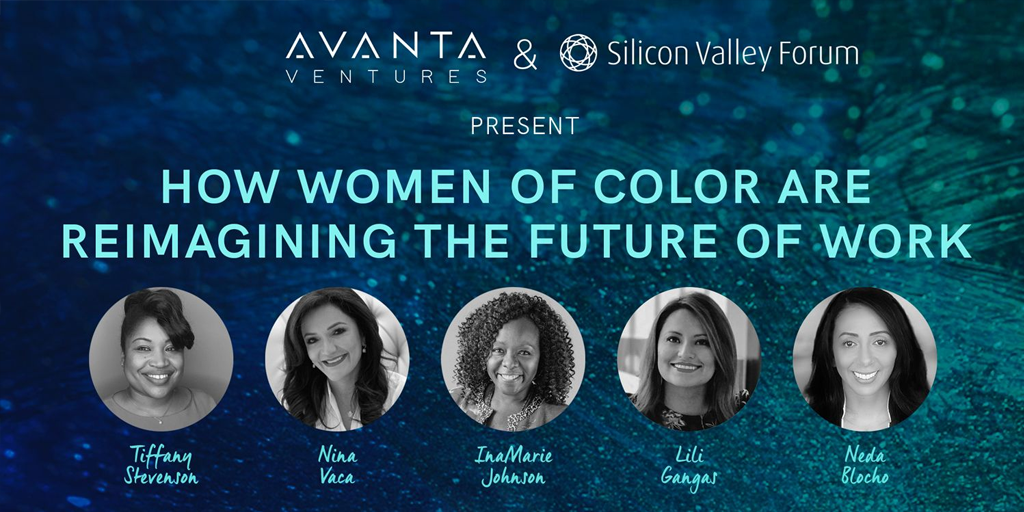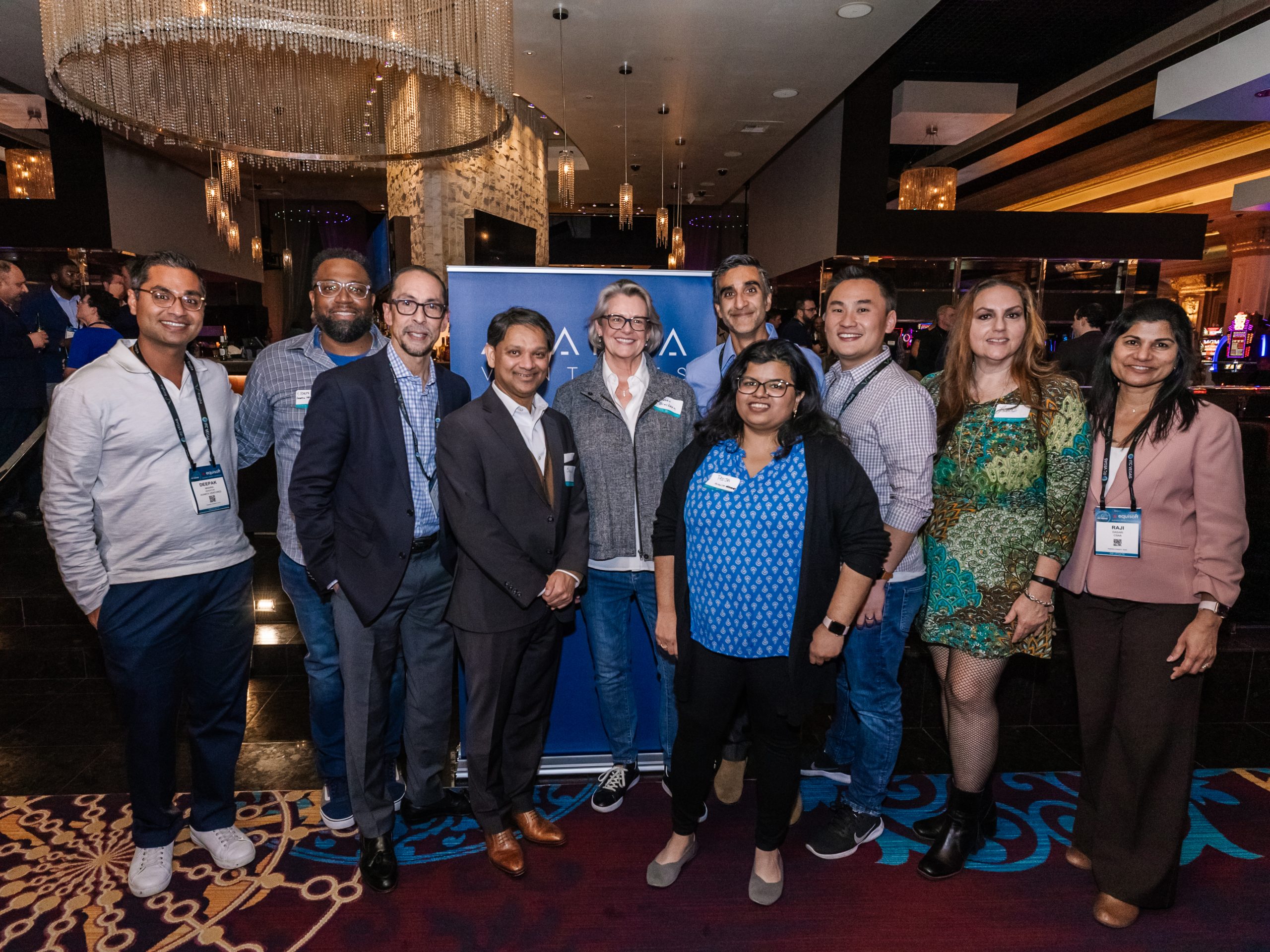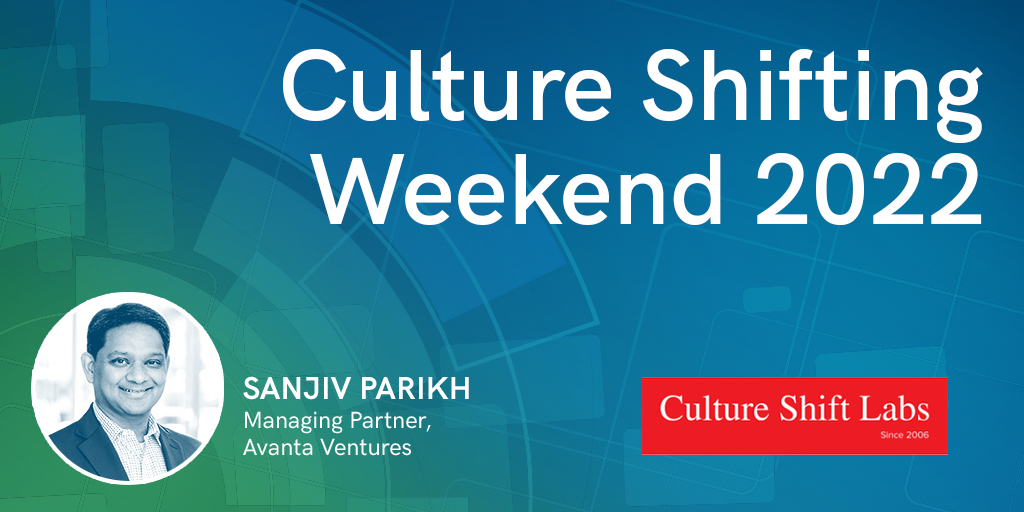This past year has had a significant impact on everyone in the workforce, especially women of color in the tech industry. The pandemic forced a staggering number of women to leave their jobs or reconsider their careers. Black, Latinx, and Asian women accounted for all female job losses in December 2020 and over 150,000 Black women dropped out of the labor force entirely. As we begin to enter this new phase in the pandemic, how can we support the women in tech going forward? What does an ideal reality look like for women of color in the workforce?
We had the pleasure of co-hosting an in-depth conversation between four incredible women in the tech space who have seen first-hand how the pandemic has affected women of color. They shared with us the lessons they’ve learned along the way, and how leaders can help women in the tech industry feel supported and empowered during this difficult time.
The virtual event was co-hosted by Silicon Valley Forum and Avanta Ventures, kicked off by Denyse Cardozo, Executive Director at Silicon Valley Forum and moderated by our very own Neda Blocho, Principal & Head of Avanta Studios.
Thank you to our amazing panelists for sharing their experiences and thoughts:
- Tiffany Stevenson— Chief People Officer, Patreon
- Lili Gangas — Chief Technology Community Officer, Kapor Center
- Nina Vaca— Chairman & CEO, Pinnacle Group, Inc.
- InaMarie Johnson— Chief People and Diversity Officer, Zendesk
In case you missed out on the discussion, we’ve summarized four of the lessons shared by our panelists:
Be vulnerable
After the pandemic hit, we were left wondering what the future of work would look like. Would we ever return to the office? Would our own jobs be in jeopardy? The fear of the unknown was enough to cause anxiety and stress among the masses. Tiffany Stevenson, from Patreon, struggled with feeling vulnerable as she watched the events of the world unfold. When she thought about all the past year has brought, she realized that with everything happening, the hardest part was putting on a “happy face” for work, even though she wasn’t okay. “Being comfortable with being uncomfortable was something I had to work on,” said Tiffany,“If I can’t be vulnerable with my team and colleagues, then how can we create a work culture where we can make that okay for others?” She explained how she spent the past year asking herself, “What does vulnerability in the workplace look like?” She learned that the most effective way to create a healthy work environment was to recognize what was needed and how to provide support by making space for those needs.
What does vulnerability in the workplace look like?
Tiffany Stevenson, Chief People Officer, Patreon
Support your team
As a result of the pandemic, numerous women of color felt growing work life balance pressures, often having to choose between their jobs and supporting their families at home. InaMarie Johnson’s company, Zendesk, dedicated themselves to creating a work environment where their employees didn’t have to make that difficult decision. With mental health as a top priority, InaMarie’s approach reimagined the meaning of “work life balance.” Her company devised solutions to give their employees the opportunity to keep their careers while also prioritizing their families. One way they executed this goal was providing their employees with free access to Care.com, a subscription-based online marketplace for childcare, senior care, special needs care, tutoring, pet care, and housekeeping. Zendesk also created a program called “Covid-Care Leave” which gave employees the opportunity to step away when they felt overwhelmed from balancing their job and family life during the pandemic. This initiative was created to prevent women, particularly caregivers, from feeling as though they had to make the decision between work and their family. Read more about how Zendesk prioritizes mental wellness and self-care.
Reimagine an ideal world
The panelists were asked what their ideal “new normal” would look like to create a more equitable environment for women of color in the workplace. Lili Gangas, from Kapor Center, explained that she hopes to see less pay discrepancy among women of color in the tech industry. We are seeing the future of work evolve into a hybrid work model, where the pressures of working 24/7 are diminished. While Lili believes this new work model will allow women to feel empowered in the workplace, she also notes how leaders must play a part in ensuring equitable pay by improving company leadership. “We need more company leaders that aren’t just about doing business,” she explained, “This is really a time for more CEOs to be activists who are thinking about empathy.”
Pinnacle Group’s Nina Vaca added that her ideal world requires a “leaning in” from corporations by “creating an inclusive culture, creating programs and services, elevating not only women of color, but also underrepresented communities, and recruiting and creating awareness to get more young women into technology.” Accomplishing that also means starting with education. “Education is, and will continue to be, the biggest equalizer in our country,” she said, “We have the responsibility to innovate, learn, and create awareness for the younger generation.” When she first read the staggering statistics about the lack of women of color in tech, Nina didn’t get mad. Rather, she became motivated. “If you are a woman of color in this country, there are opportunities for you waiting to be discovered.”
If you are a woman of color in this country, there are opportunities for you waiting to be discovered.
Nina Vaca, Chairman & CEO, Pinnacle Group, Inc.
Keep learning
To wrap up the discussion, the panelists were asked to give parting advice for women of color in the tech industry. “Keep learning,” said Lili, “Stay curious. This is the time for people to keep mobilizing.” She encouraged women to get out of their comfort zone and to keep working toward their future goals. By fostering a curious mindset, we may discover jobs that we have never even thought were possible for women in the industry. Having a strong learning mindset will not only empower women, but also encourage them to leave their mark in technology.
Thank you to Silicon Valley Forum and all the panelists for an incredible discussion about the bright future for women of color in tech!
Interested in more? Watch the full event.




